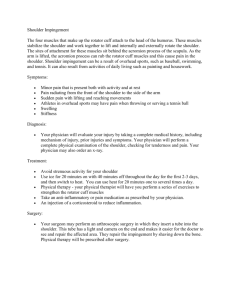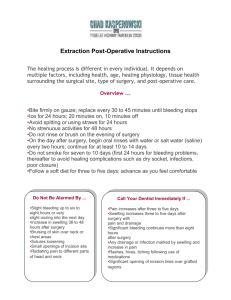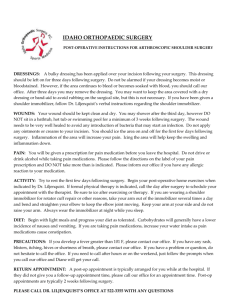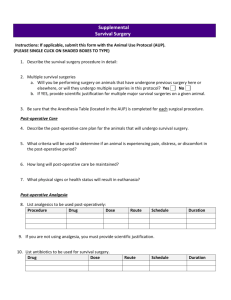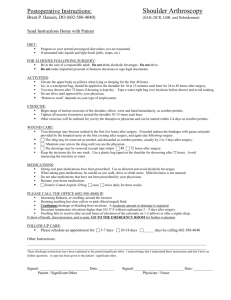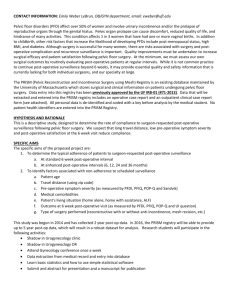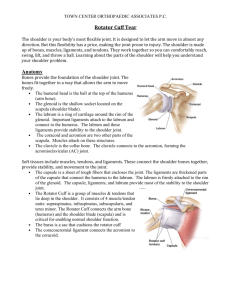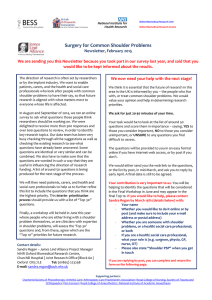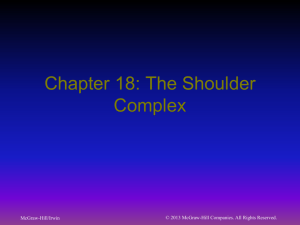Post *operative Shoulder Arthroscopy instructions
advertisement
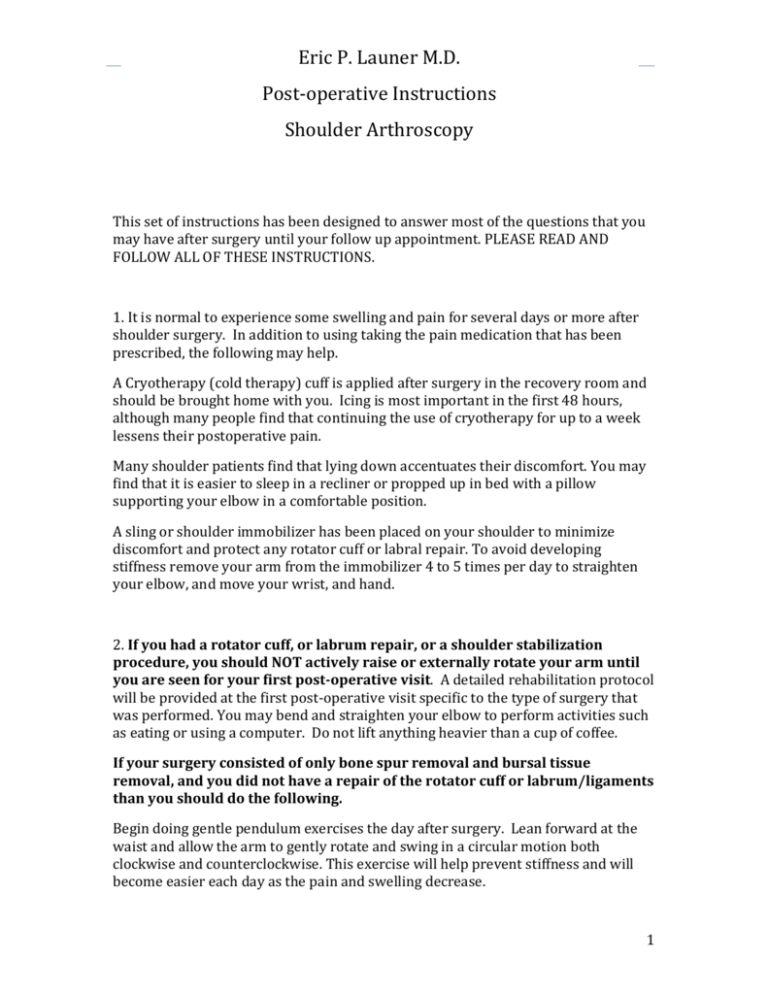
Eric P. Launer M.D. Post-operative Instructions Shoulder Arthroscopy This set of instructions has been designed to answer most of the questions that you may have after surgery until your follow up appointment. PLEASE READ AND FOLLOW ALL OF THESE INSTRUCTIONS. 1. It is normal to experience some swelling and pain for several days or more after shoulder surgery. In addition to using taking the pain medication that has been prescribed, the following may help. A Cryotherapy (cold therapy) cuff is applied after surgery in the recovery room and should be brought home with you. Icing is most important in the first 48 hours, although many people find that continuing the use of cryotherapy for up to a week lessens their postoperative pain. Many shoulder patients find that lying down accentuates their discomfort. You may find that it is easier to sleep in a recliner or propped up in bed with a pillow supporting your elbow in a comfortable position. A sling or shoulder immobilizer has been placed on your shoulder to minimize discomfort and protect any rotator cuff or labral repair. To avoid developing stiffness remove your arm from the immobilizer 4 to 5 times per day to straighten your elbow, and move your wrist, and hand. 2. If you had a rotator cuff, or labrum repair, or a shoulder stabilization procedure, you should NOT actively raise or externally rotate your arm until you are seen for your first post-operative visit. A detailed rehabilitation protocol will be provided at the first post-operative visit specific to the type of surgery that was performed. You may bend and straighten your elbow to perform activities such as eating or using a computer. Do not lift anything heavier than a cup of coffee. If your surgery consisted of only bone spur removal and bursal tissue removal, and you did not have a repair of the rotator cuff or labrum/ligaments than you should do the following. Begin doing gentle pendulum exercises the day after surgery. Lean forward at the waist and allow the arm to gently rotate and swing in a circular motion both clockwise and counterclockwise. This exercise will help prevent stiffness and will become easier each day as the pain and swelling decrease. 1 Eric P. Launer M.D. Post-operative Instructions Shoulder Arthroscopy 3. Keep the postoperative dressing clean and dry. REMOVE YOUR BANDAGES TWO DAYS FOLLOWING SURGERY. Leave any steri-strips in place and let them fall-off naturally. You may shower beginning two-days postoperatively. Gently pat the incisions dry and keep them covered with band-aids until your first post-operative visit. Do not allow your shoulder to be submerged in water (swimming or baths) until the incisions are examined at your first post-operative visit. 4. Plan to take at least two or three days off work after surgery. You can resume work when the pain and swelling subside. This may be a week or more depending on the type of procedure that was performed on your shoulder. If your job requires the use of your arm and there are no duty modifications available than you should remain out of work until you are cleared to return by Dr. Launer. 5. Pain may take days to weeks to completely subside and varies depending upon the extent of the damage that needed to be repaired. Swelling will typically decrease over the first few days, and saline fluid used during the arthroscopic procedure may drain onto the bandages. If you experience severe and worsening pain, redness, drainage, or fever (after the first day or two), this could indicate infection, and you should contact Dr. Launer’s office if you have any concerns. 2
